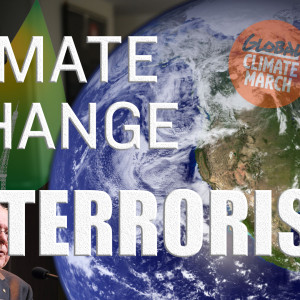(Scroll down for some great sustainable alternatives to fast fashion!)
Clothing is a big deal. We are far past the days when what you wore simply protected you from the elements. Now what you wear is a statement and a way of expressing your identity. This desire to reflect who we are in our style is great — but unfortunately this desire for self-expression has been co-opted by the fast fashion industry.
What is fast fashion?
A quick google search reveals that fast fashion is rapidly cycling, low-cost clothing collections that mimic current luxury fashion trends. Basically, clothing retailers are going from concept to manufacture to sale incredibly quickly.
To make fast fashion work, the garment you buy today has to be replaced next week. The treadmill of clothing this model creates has a major cost. Unless you are a higher-up in one of these companies, fast-fashion is the worst possible way to make and distribute clothing.
There is simply no way that resources can keep up with this increasing demand for throw-away fashion. Cotton — the major ingredient in most of the textile industry — drinks up 2.6% of global water use. From the get-go cotton has been a problematic fiber. Its history is steeped in slavery, human suffering and waste. And it hasn’t gotten much better.
I’ll get to the human cost in a few paragraphs, but in light of the water crisis in California, (remember it takes 4L of water to grow an almond) it takes over 27 hundred liters of water to grow and produce a cotton t-shirt. Add jeans and suddenly your outfit costs 20 thousand liters of water.
Cotton doesn’t just soak up water, to grow the volume that we do requires lots of fertilizers and pesticides — which means runoff, contamination, and a host of other issues. 25% of the chemicals produced worldwide are used in the textile industry, making it the #2 polluter of clean water behind agriculture.
Of course, cotton isn’t the only material used in clothes. Synthetic material have their own host of issues with the environment. Polyester, for example, is made out petroleum. Gross. The NRDC has our back on this though and has an excellent breakdown of all the types of fibers and their individual impact on the environment — which can help us in selecting the clothes we need to buy.
To make matters worse, companies are churning out new clothes at ridiculous rates. And they are PROUD of this. A spokesperson for H&M practically brags about the frequency in which they restock their shelves.
Somehow our entire culture has recently been consumed with this idea of new clothes all the time. Clothing purchases increased by a third from 2002 to 2006 and women now have four times as many clothes in their closets as they did in 1980.*
And what happens when these clothes bought so cheaply and so frequently go out of style? We throw them away.
The average American generates 84 pounds of textile waste per year. 84 unnecessary pounds of wasting adding to the already terrifying and significant landfill problem.
“Adding up all the waste along the way, the pesticides, the dye run-off, the petroleum, the water use and thrown-away clothes makes the textile industry the 2nd largest polluter behind big oil. The making of the clothes we wear, is only beat out by the people literally pulling the pollutants out of the ground.”
In what universe is that a thing we are okay with?
Basically this whole thing is a never-ending pit of despair. Tied up in the environmental degradation are hundreds of cases of human rights violations.
We are supposed to be past all this, wasn’t this why everyone protested and rushed to the polls in the 90s! Unfortunately, all the talk of sweatshops and human rights just made these big-box companies distance themselves from the clothing manufacturers. Now these places operate with little to no oversight which leads to some pretty horrific events. The worst instance being the Rana Plaza factory building in Bangladesh which killed 1,134 people and left hundreds more injured.
John Oliver does a fantastic deep dive into the epidemic of cheap clothing and gross human rights violations.
Oliver outlines how unbelievably ridiculous it is that clothing has become so cheap and describes the still present and awful human rights violations in many clothing factories.
If that wasn’t enough information for you, definitely check out the documentary, The True Cost. Also this book exists, which I haven’t read yet, but is apparently quite good.
The textile industry is a particularly apt example of the intertwined nature of environmental and social justice. Lifting people out of poverty, the conditions that allow these large corporations to take advantage of so many workers will also reduce the strain and demand on the environment. Likewise — cracking down on environmental regulations like what dyes and chemicals can be used in the manufacturing process or addressing the cultural issues that lead to overconsumption will hopefully improve the lives of these workers.
Fortunately, there is a lot that can be done by individuals.
And I’m going to start simple. The three RRRs.
REDUCE. REUSE. RECYCLE.
Yeah, yeah, shut up in the back, I know you’ve heard these before. But it isn’t just about paper and cardboard and plastic. Drive it into your head about EVERYTHING.
REDUCE. REUSE. RECYCLE.
And keep in mind. They are in order of most helpful → least.
REDUCE.
Slow down your consumption. You still look great in that shirt from last season and those jeans that you love, who cares that skinny jeans are out and flares or whatever is in. You look good, I promise. We don’t need to be guided by advertisements and peer pressure telling us what and when to buy.
REUSE.
This one is the fun one. Do you know how many cool things you can do with an old shirt? For starters, you can stitch it up. I’ve said this a thousand times and I’ll say it again. Patches are cool,** elbow patches doubly so. And if the shirt is past its prime for protecting you against the elements, you’ve got a lovely rag to mop up spills, stuffing for a pillow, fabric for a blanket or material for an art project.
RECYCLE
This one is the easiest. Chances are there is a textile recycler near you. If you live in NYC you can drop off your clothes all over the place with Grow NYC. And if you live elsewhere there are tons of resources for tracking down your friendly neighborhood recycler.
And since we must occasionally buy clothing here are a few of my favorite brands that are trying their very best to support and protect the environment and people. If you’re a fan of any others, please let me know in the comments — I’d love to expand this list!
[EDIT for Jessi’s contributions to the list – thrift and consignment-based clothes purchases are a great way to fight the fast fashion man and save some money! Thrifting hits all three R’s at once. Here are my favorite queer and disability friendly thrift & consignment institutions in the Bay and beyond:]
* I tried to find a similar stat that wasn’t so gendered, unfortunately most stats around clothing focus on the industries perceived demographic — even though men also have to buy clothes #everythingissexistughh
** screw bowties
Sources:
http://wwf.panda.org/about_our_earth/about_freshwater/freshwater_problems/thirsty_crops/cotton/
http://grist.org/living/4-crazy-facts-from-a-new-fashion-documentary/
https://www.ethicalfashionforum.com/the-issues/fast-fashion-cheap-fashion
http://blogcritics.org/fast-fashions-consequences-the-true-cost-a-film-by-andrew-morgan/
http://waterfootprint.org/media/downloads/Report18.pdf
http://www.nrdc.org/international/cleanbydesign/files/CBD-Fiber-Selection-FS.pdf





Leave a Reply